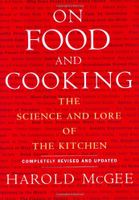Advertisement
Milk After Infancy: Dealing with Lactose
Appears in
By Harold McGee
Published 2004
In the animal world, humans are exceptional for consuming milk of any kind after they have started eating solid food. And people who drink milk after infancy are the exception within the human species. The obstacle is the milk sugar lactose, which can’t be absorbed and used by the body as is: it must first be broken down into its component sugars by digestive enzymes in the small intestine. The lactose-digesting enzyme, lactase, reaches its maximum levels in the human intestinal lining shortly after birth, and then slowly declines, with a steady minimum level commencing at between two and five years of age and continuing through adulthood.


